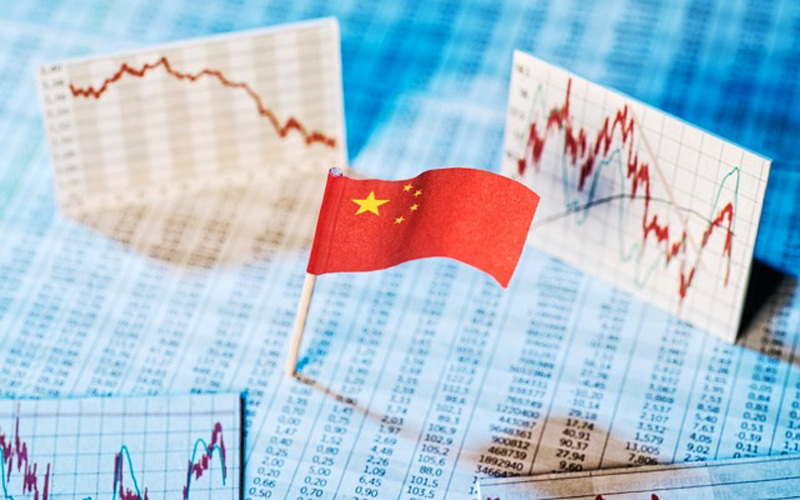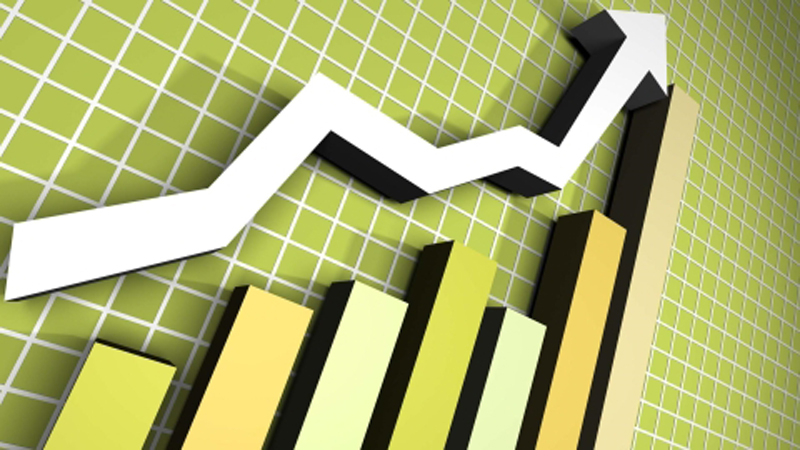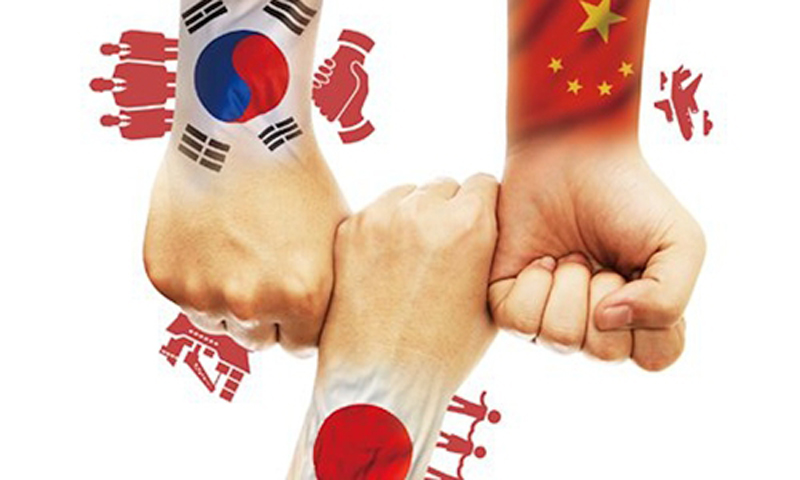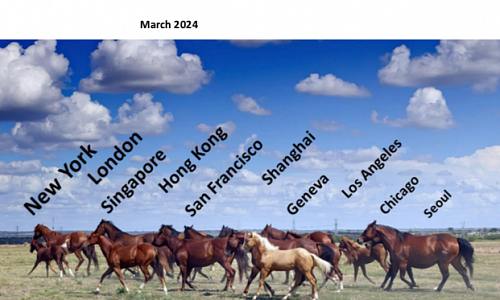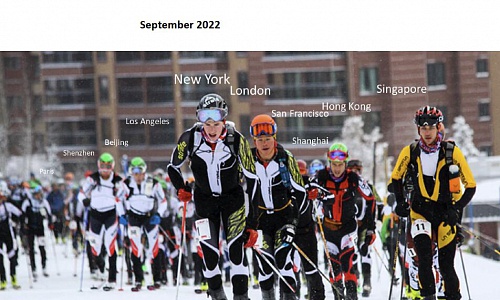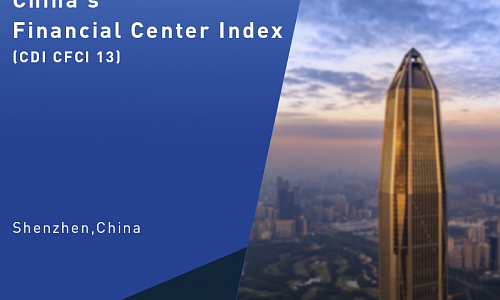Innovation of Institutional Integration – Hainan Free Trade Port
Information
On June 1, 2020, the Overall Plan for the Construction of Hainan Free Trade Port was released, making China’s Hainan Province the world’s largest free trade zone. To better understand its implications, CDI researchers gave an interpretation and analysis of the policies laid out in the plan.
Date: June 7, 2020
Host: CDI
Theme: Innovation of Institutional Integration – Hainan Free Trade Port
Moving toward pre-pandemic levels
The National Committee of the Chinese People's Political Consultative Conference (CPPCC) convened the annual two sessions on May 21st. Although for the first time the government did not set an annual growth target - possibly due to so many COVID-19 uncertainties ahead - we expect the implicit growth target is 1.8% for now, given the projected deficit and inflation numbers.
The economy is quickly recovering, as the pandemic has come under control. In April, industrial output growth turned positive, and was up 3.9% y/y, and up 5 pps from March, down only 2 pps from the pre-pandemic level, in Q4 2019. Investment was up 0.8% y/y, and up 10.3 pps from March, mostly driven by expansionary state investment.
Consumption decreased less. Retail sales of consumption goods fell 7.5% y/y, up 8.3 pps from March. Exports were 4% y/y, comparable to the pre-pandemic level. Imports fell 6.1% y/y after seasonal adjustment, down 5.4 pps from Q1. Decreased imports are in line with overall weak domestic demand.
CPI was up 3.3% y/y after seasonal adjustment, down 1 pps from March. We expect CPI to fall further this year, led by large declines in food-related categories.
Monetary policy shows strong support for the economy. M2 was up 11.1% y/y, and M1 increased 5.5% y/y, up 1 and 0.5 pps from March. RMB loans from financial institutions were up 13.1% y/y, up 0.4 pps from the end of March.
China’s housing prices rose at a slightly faster pace in April. According to the National Bureau of Statistics (NBS), average new home prices in 70 major cities rose 0.5% in April from March, a pace not seen since October 2019, and following a 0.1% increase in March. The strong housing market lends support to macroeconomic and financial stability; for example, around 50% of loans in China are directly or indirectly linked to the real estate market. Strong housing investment also shows investor confidence amid domestic pandemic and global economic uncertainties, a key factor furthering the overall recovery.
Big change and China’s economy
Author: Fan Gang, President of China Development Institute
Editor’s Note: At "Global Venture Capital Conference 2020" held in Qingdao on 9th May, Prof. Fan commented on the big change and China's economic future.
Uncertainties continue to increase as the pandemic swept the world. The undetermined probability made it extremely difficult to conduct risk assessment, economic analysis or judgement. Hence, caution should be exercised in any analytical effort towards economic trends. Countries ought to apply bottom-line thinking and pay close attention to how the pandemic progresses.
With the tendency to becoming a norm, the pandemic’s side effects include interruption of supply chain and the resulting food crisis. Agricultural production reduced dramatically as they could not be transported to the destination country. On the other hand, quarantine dictates that labor-intensive industries, including food processing factory, halts operation. Subsequently, global food supply is greatly affected.
China’s economy is also facing a lot of uncertainties, especially in terms of international politics, e.g. decoupling and desinicization. Trump administration has been pressing on Sino-US trade issues, undermining the development of Chinese companies.
Although it could be positive while quarantine ends and the market, revives, China’s economic growth would barely reach last year’s figure. Currently manufacture industry and infrastructure are seeing a relatively fast recovery, with service sector lagged behind. However, be that as it may, the bounce back would not be able to make up for first half’s loss.
In a time that huge changes to global economy structure are taking place, new business adventures are in order. Industries such as IT, AI, biotech, pharmaceutics and public health are currently under the spotlight. However, two other areas should be taken a closer look.
First, general consumer goods industry still has huge potential in store. GDP per capita of China reached 10,000 US Dollars last year. In both theoretical and practical sense, such phenomenon indicates that China is entering the high consumption stage characterized by higher proportion of expenditure and lower proportion of savings to income.
After a short decline in second quarter, consumption will bounce back once quarantine ends. In addition, the poverty-stricken areas of China are gradually embracing a moderately well-off society and the low-income groups in rural areas and small cities are exhibiting larger capacity for consumption as well. If and when this trend extends to the entire population of 1.4 billion, the potential is enormous.
Second, industrial restructuring. Not all the manufacturing enterprises are the right choice for investors. Many industries have massive potential, but are shackled by overcrowdedness and excessive competition. As a result, orders are scattered within the industry, making it difficult for enterprises to achieve a scale-based development and stand out. However, there are a small number of well-performing enterprises in each industry. Given the past case of overheated economy and excessive investment, restructuring is imperative for most industries. As enterprises with few orders continue to be wiped out during this pandemic, those in good shape will pick up more orders and become suitable candidate for investment.
CDI representative speaks at webinar of BRICS collaborating more effectively against COVID-19
Dr. Liu Muyun, CDI Guest Research Fellow and Director of the National and Local Joint Engineering Laboratory of Personalized Cellular Therapy, participated in the virtual session of BRICS collaborating more effectively against the global pandemic as a panelist.
Dr. Liu Muyun shared Chinese experience in containing COVID-19 and its impact on Chinese individuals and businesses, and then she pointed out that the new normal of post-COVID-19 would be like strengthening regulation on cross-border flows of people and goods, creating supply chain resilience, building remote business models and supporting healthcare IT infrastructure.
The panelists, healthcare sector business leaders from the BRICS countries, agreed that BRICS should collaborate more effectively by sharing COVID-19-related information and knowledge, making special allocations for medical supplies and pharmaceutical products, and mobilizing funds to cope with the global pandemic.
*Photo Credit: CII
“Probable information” and “regretless action”
Author: Fan Gang, President of China Development Institute
Editor’s Note: How can we cope with uncertainty during the initiate stage of pandemic? We should release “probable information” and take “regretless actions” instead of missing the window of opportunity, which is what we learn in the COVID-19 pandemic from the perspective of economics.
The toughest economic issue derived from the COVID-19 pandemic is “uncertainty”, which refers to not knowing the trend of something due to either the lack of existing knowledge or the insufficiency or inaccuracy of available information.
The first uncertainty about COVID-19, a virus that has never appeared before, is that people knew nothing about it when it was first discovered. Once cases emerge, the medical institutions and local governments should promptly report to experts of statutory authorities for scientific analysis. A public health disease cannot be defined without rigorous scientific research. It is fair to say that we would all be in a period of “uncertain information” before basic issues are clarified.
Another question pertains to how information should be released. How can you explain things you don’t yet understand to the public? How should governments, at both central and local levels, make decisions during what seems to be a “protracted” period of uncertainty before the release of exact information by national authorities? How should they explain to the public after decisions are made? What information can and should be released to the public when no exact information is available?
In this period of uncertainty, should we do nothing and helplessly watch the precious window of opportunity to slip away? When we take no actions because of our ignorance about the disease, it will continue to spread. As a result, we will lose the best chance to contain it.
This is the dilemma we may fall into. We need to find a better way to deal with this “protracted” period of uncertainty, that is, seeking truth from facts, acknowledging uncertainties, releasing “probable information” during the period of uncertainty, and timely taking “regretless” and preventive actions on a limited scale according to this information.
“Probable information” refers to incomplete or uncertain information. Instead of offering no information at all, it includes speculations and judgment on the basis of a limited amount of facts. “Regretless action” involves relatively low cost and rather slight negative effect. If the early judgment is later found to be misguided, it would be rather easy to correct. Its most important value should be interpreted “in reverse”: if actions are not taken now, not even actions with little disturbance, then we would regret it even more in future for wasting the window of opportunity for pandemic prevention.
For example, first of all, the protection of medical personnel in a region (or city) can be strengthened. This measure comes at a rather low cost and helps to ensure the health of medical staff. Even if the “pandemic” turns out to be nothing, we will not regret taking such an action. Next, suggestions can be made to residents in the pandemic-hit city to wear masks. This measure will come at a cost, including the cost of materials for making masks and the discomfort of wearing them, but the cost is relatively low. Then it is also possible to strengthen sanitation efforts in public places and restrict and reduce big gatherings. These are all preventive measures with low cost. Moreover, as the situation becomes clearer, the local government may even impose stricter restrictions on residential areas and commercial districts. The cost of this local preventive measure is still relatively low from a national perspective, while its benefit is to timely contain the pandemic within a local range and prevent it from escalating to a public health crisis. If the measure is later shown to be over-reacting, it can be corrected without too much difficulty. All of them are early preventive measures that can be introduced at a local scale before definite information is available.
The following conclusions can be made based on the above analysis:
Decision-making regarding major preventive measures, like lockdowns, must be based on definite information. This kind of definite information, provided by statutory authorities on the basis of scientific research, will inform decision-making of the central government. China’s existing laws and regulations have clear and unalterable stipulations about it.
The period starting from the appearance of the first case to the announcement of definite information by the statutory authority is a “period of uncertain information”,during which the primary task of medical institutions and local governments is to provide accurate information to authoritative departments in a timely manner. This is also clearly stipulated in China’s current laws and regulations, and needs to be effectively implemented.
Meanwhile, the following provisions should be included in national regulations on the management of major public health incidents: local pandemic prevention agencies and local governments during the period of uncertain information should be allowed to issue “probable information” and take “regretless” actions in a prudent manner as early preventive measures. If the information is far from being certain, the local government can take moderate “regretless actions”, while stronger preventive measures may be taken by authoritative agencies at higher levels only when the information reaches a higher degree of certainty and when the pandemic is proved to be severe.
What needs to be made clear is that information release and preventive measures are complementary to each other. If local governments take “regretless” actions early on, they must be allowed to issue the then available but not so certain information - the “probable information”. Otherwise they cannot explain to the public why these preventive measures are necessary. What’s more, it is also important to explicitly tell local residents about the uncertain nature of the “probable information” when it is released, and that the final decisions will be made by more authoritative agencies.
The authority of local health and pandemic prevention agencies and local governments to take actions should also be clarified through laws and regulations, with detailed implementation processes, decision-making procedures and action guidance. It can also be categorized into several levels of response, which should follow stipulated procedures.
To discuss these issues now is, of course, to mend the fold after a sheep is lost, but can help us do better when facing similar situations next time, though we do hope that there will not be a next time.
The Economic Road to Post-Covid-19 Recovery Fast or Slow?
Information
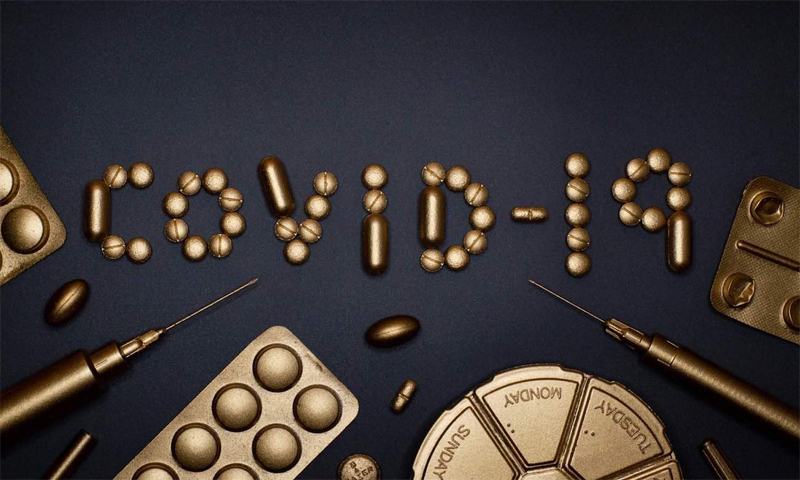
China’s GDP shrank 6.8% in the first quarter of 2020 and projections for the year are of a significant slow-down from ‘normal’ growth of 6% or more. Covid-19 is hitting Western economies later, and seemingly harder. Western GDP is widely expected to decline. As China leads the way out of covid-19 lockdown and tries to grow again, what can locked-down westerners spend their time usefully thinking and learning about.
Date: May 7, 2020
Host: CDI and Z/YEN
Theme: The Economic Road to Post-Covid-19 Recovery Fast or Slow?
Chinese Economy on COVID-19 impact: Challenges and Solutions
Information
The global pandemic has abruptly halted almost all human activity and subsequently created serious challenges to the revival of economy. On April 29, CDI organized an online meeting where academics around the country debated possible solutions to this puzzle.
Date: April 29, 2020
Host: CDI
Theme: Chinese Economy on COVID-19 impact: Challenges and Solutions
The post Covid-19 World will be more or less globalized?
Information
Prof. Fan Gang, President of CDI, held a discussion with Michele Geraci, former Under-Secretary of State for the Italian Ministry of Economic Development on “the post Covid-19 World will be more or less globalized”. The two economists shared their analyses about the post Coronavirus outbreak with particular attention towards the forces that will push the World into a new economic equilibrium. They provided insights and arguments from the European and Chinese points of view on the geo-economic balance that is likely to arise after the crisis.
Date: April 23, 2020
Host: CDI and The European House – Ambrosetti
Theme: The post Covid-19 World will be more or less globalized?
Focusing on “six stabilities,” while struggling to grow
The Chinese economy was hit hard by the coronavirus in Q1, and GDP fell -6.8% y/y. Because the virus is almost contained in China, economic activities have since March been gradually picking up, and there were clear signs of recovery. Industrial output was down -1.1% y/y, up 12.4 pps from January-February.
Consumption has been hardest hit, largely due to quarantining. Retail sales of social consumption goods fell -19% y/y in Q1, and -15.8% y/y in March, up 4.7 pps from January-February. Trade has so far been largely unaffected. Exports in March were up 2.8% y/y after adjustment, down only 1.4 pps from Q4 2019. Imports were up 2.4% y/y, down 2.8 pps.
Fixed asset investment has been left as the only major factor to keep the economy afloat, because of future weakening overseas demand, and of domestic consumption demand. By March, investment had not recovered to normal levels, falling -9.5% y/y, up 15 pps from January-February.
CPI eventually fell, and was down -0.6% m/m after adjustment, and up 4.3% y/y in March, down 1 pps from January-February. The ex-factory price index of industrial goods fell -1% m/m, and was down -1.5% y/y. PPI fell -1.1% m/m, and was down -1.6% y/y. Major financial indicators are the only ones not negatively impacted. M2 rose 10.1% y/y, and M1 rose 5% y/y, up 1.4 and 0.2 pps respectively from the previous month.
On April 17th, President Xi Jinping chaired a major meeting of the Politburo, China’s highest policy decisionmaking body, which promised to step up the magnitude of policies to achieve the country’s goal of “six stabilities:” stable employment, trade, financial markets, investment, foreign capital and expectations, on the condition that the virus has been effectively controlled. We believe there will be expansionary monetary and fiscal policies, such as interest rate cuts and accelerated infrastructure construction, but not a mass flooding to the market, per the approach of the Fed. Unlike in other major economies, China has been saving for rainy days to make these policies feasible, with its still-sizable gap with a zero interest rate, low central government debt, sizable state-controlled economy meaning non-cyclical unemployment, implicit social security system meaning unemployed migrant workers still possessing agricultural lands, and a high household saving rate.
Battle against COVID, an opportunity for China, Japan and South Korea to build joint mechanism
Author:Fu, Yongjia, Postdoctoral Research Fellow, China Development Institute
Editor’s Note:Confronting the deadliest virus in a century, China, Japan and South Korea demonstrated remarkable solidarity. The three nations in East Asia are giving helping hands to each other in hard times. In early February, when China’s confirmed cases were climbing, Japan and South Korea provided China with urgently needed protective gears, though they also face the danger of domestic transmission.
Now, when COVID cases are subsiding in the East Asia continent, China has been ramping up efforts to support Japan and South Korea and sending them medical supplies in large quantities. In an era where trust between major countries is running low, such mutual help and aids in combating COVID-19 is an uplifting sign that China, Japan and South Korea could upgrade their cooperation on health issues to a new level.
First, peoples in the three countries share a common cultural heritage and tend to sympathise with each other in the face of natural disasters. Recently, aid workers in the three countries printed classical verses from The Book of Odes (China, 1046-700 BCE), poems composed by Prince Nagaya (Japan, 685-729 CE) and Choe Chiwon (Korea, 857 CE) on packages of medical supplies as a unique way of expressing solidarity. Looking back at history, we can see the three nations had also proactively come to each other’s help during massive disasters such as the 2008 Sichuan earthquake and the 2011 Tohoku earthquake and tsunami. Warm memories like these provide an optimal starting point to pool the three countries’ resources toward disease prevention.
Second, China, Japan and South Korea’s respective responses to the pandemic bear similarities, which is conducive to a consensus on how to deal with a large-scale health emergency. In fighting COVID, the Chinese government showed strong determination, carried out the lockdown, reversed the trend, stopped the contagion and restarted the economy. Meanwhile, with mass testing, the use of big data and contact-tracing technology, South Korea implemented a nuanced approach that flattens the curve without shutting down the entire economy. On the other hand, Japan has been exploring a softer approach and trying to keep COVID’s disturbance to the national economy to the minimum. Despite their differences, China’s ‘hard’ solution, Japan’s ‘soft’ approach and Korea’s ‘middle way’ are all based on effective leadership of the government, the values of collectivism and the proper state intervention. These shared traits of the three nations’ responses to the coronavirus could facilitate their collective actions to tackle infectious diseases.
Third, the close economic ties and frequent movement of people between the three countries makes joint mechanism against infectious diseases an absolute necessity. In 2019, China was the biggest trading partner of both Japan and South Korea; while Japan and South Korea were China’s 2nd and 3rd largest trading partner, respectively. China is also South Korea’s biggest export market and its largest origin of imports. As of 2018, Japan remains the largest cumulative investor in China, with US$ 112 billion in investments. Chinese visitors to Japan increased tenfold in the recent ten years, reaching 9.59 million in 2019. Similarly, Chinese visitors to South Korea numbered 8.07 million in 2016. According to the statistics of the Embassy of Japan in China, about 140,000 Japanese citizens live in China, while the number of Chinese citizens residing in Japan amounts to 674,000.
To sum up, China, Japan and South Korea have a shared destiny in the face of contagious diseases. The three countries are so near to each other, their economies are so intertwined, and travellers between them are so numerous, that a disease outbreak in one country will quickly spread to the other two nations. The SARS in 2003 was the first strain of coronavirus posing a threat to entire East Asia. Later, in May 2015, only eight days after Korea reported to the WHO the first domestically confirmed case of MERS, China had seen the first imported case, which incurred as many as a hundred contacts. Although MERS did not spread widely in Japan and China, it did show the weakness in the disease prevention system in East Asia. The current COVID crisis should serve as a ‘wake-up call’ that the three countries should join together to fight the virus and build a joint mechanism to tackle future epidemics:
- China should continue to ramp up its support to Japan and South Korea to stop the pandemic in East Asia. Although China had contained COVID’s spread within its boundary, its national safety will be under continuous threat so long as Japan and South Korea are troubled by the coronavirus crisis. The wisest strategy for China is to aid the two neighbours and make East Asia free of COVID as soon as possible. Therefore, China should provide more protective gears and medical supplies to Japan and South Korea, send experts and volunteer teams to the affected areas and provide infrastructural support should it be convenient.
- The three countries could explore new ways to resume international travel between them. The pandemic had locked borders and crippled international travel. The reopening of the closed borders still poses hard challenges for most countries. In light of this, the immigration departments of the three countries should carry out joint inspections at each other’s border, stopping high-risk persons from boarding planes and ships. Moreover, the three countries could share their screening and testing results, create ‘health passports’ for international travellers. By using smartphone apps and Bluetooth technology, the three nations could offer travellers an option to isolate themselves at their own homes before travel, which significantly reduces the cost of mass quarantine.
- China, Japan and South Korea should build a long-term joint mechanism to deal with future outbreaks of contagious diseases. They should make full use of the goodwill accumulated in fighting COVID and turn the temporary measures during the crisis into long-term institutions. For example, the three parties could maintain a permanent green channel for crucial medical supplies. To ensure swift and proper treatment of each other’s citizens, governments should also negotiate the mutual recognition of medical insurance regarding epidemics. Last but not least, the three countries should take collective actions to secure the supply chain in East Asia, relieve the tax burden of companies and protect the industries of the region from future disasters.








